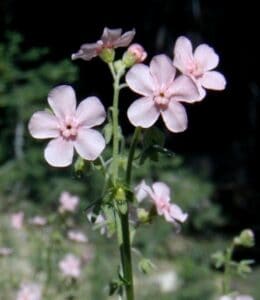Hackelia mundula

Cultivating Charm: A Guide to Propagating the Delightful Hackelia mundula
The plant world is brimming with fascinating species, each carrying unique charm. Among them stands the Hackelia mundula, an often-overlooked beauty boasting delicate blue blooms and captivating foliage. If you’re searching for a new botanical companion to grace your garden, propagating Hackelia mundula might be your next green adventure. Let’s delve into the how-to of bringing more of this charming plant into your life!
Understanding Hackelia mundula
Native to Western North America, Hackelia mundula, sometimes lovingly called the "small-flowered stickseed," is a biennial or short-lived perennial. Imagine dainty, blue forget-me-not-like flowers clustered on graceful stems that rise from a basal rosette of softly hairy leaves. This delightful plant is relatively compact, usually reaching a height of one to two feet, making it perfect for borders, rock gardens, or even wildflower meadows.
Methods of Propagation
The good news is that propagating Hackelia mundula is relatively straightforward and can be achieved through two primary methods:
1. Seed Propagation:
- Timing is Key: Fall is the ideal time to sow Hackelia mundula seeds directly outdoors. This allows them to undergo natural stratification (a period of cold exposure) during winter, which enhances germination rates come spring.
- Sowing the Seeds: Choose a well-drained location with partial shade. Scatter the seeds on the soil surface and lightly rake them in. Mother Nature will largely take care of the rest!
- Patience is a Virtue: Germination typically occurs in the spring. Be patient and keep the soil consistently moist until the seedlings emerge.
- Thinning for Strength: Once the seedlings have produced a few sets of true leaves, thin them out to provide adequate spacing (approximately 12-18 inches apart) for optimal growth and airflow.
2. Division:
- When to Divide: Spring or early fall is the perfect time to divide established Hackelia mundula plants.
- The Dividing Process: Carefully dig up the plant, ensuring you lift a good portion of the root system. Using a sharp, clean knife or garden shears, divide the plant into smaller sections, each containing healthy roots and shoots.
- Replanting the Divisions: Replant the divisions at the same depth they were originally growing, ensuring proper spacing and watering them in thoroughly.
Caring for Your New Propagations
- Light: While Hackelia mundula prefers partial shade, it can tolerate full sun in cooler climates. Aim for a spot that receives around 4-6 hours of sun per day.
- Soil: Well-drained soil is crucial to prevent root rot. Sandy or loamy soils are ideal.
- Water: Water regularly, especially during the first growing season after propagation, keeping the soil consistently moist but not waterlogged.
- Maintenance: Deadhead spent flowers to encourage further blooms and prevent unwanted self-seeding if you want to control its spread.
Reaping the Rewards
With a bit of care and attention, you’ll soon have a flourishing colony of these enchanting plants gracing your garden. Their delicate beauty attracts pollinators, adding a touch of whimsy to your outdoor space. So, why not embrace the joy of propagation and share the charm of Hackelia mundula with fellow plant enthusiasts? It’s an endeavor sure to spark joy and bring a touch of wildflower magic to your backyard haven.